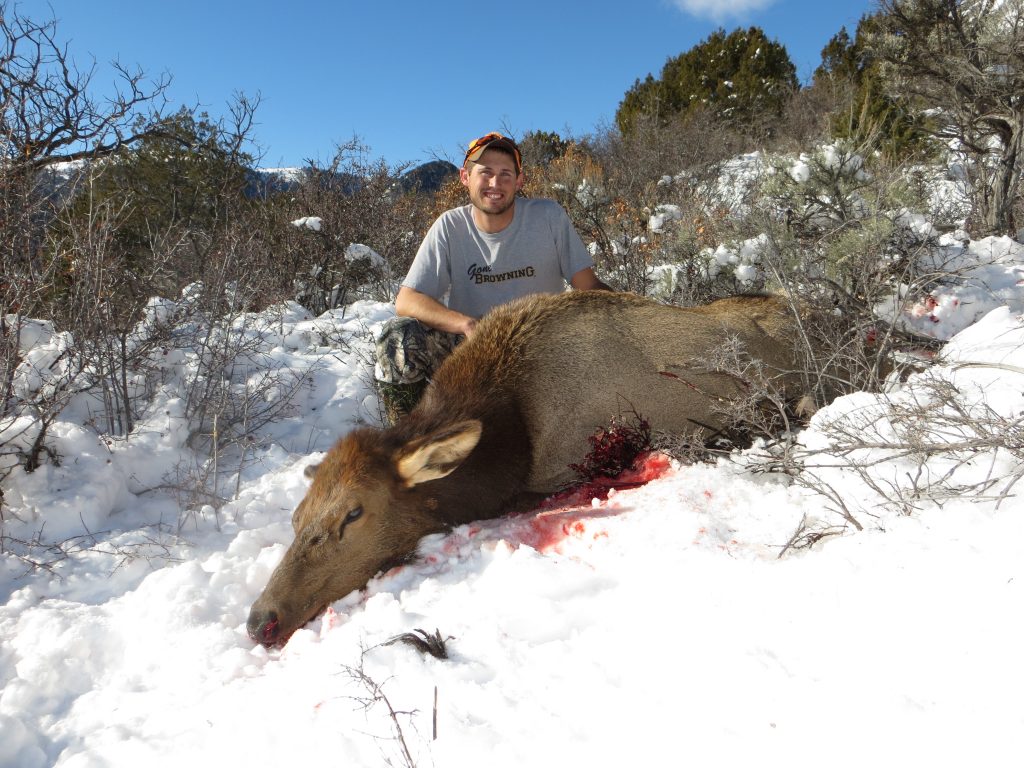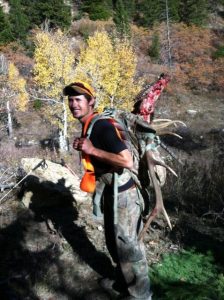Every year, the anticipation of your draw results can be brutal; waiting to see what tags you may or may not have drawn. While there may be better odds of filling a tag in a trophy unit or in an area you’ve been hunting for years, there are other options if you do not draw. Each year, there are people wondering what they can do to bag a trophy or just fill their freezer when they don’t draw their coveted tags. What some people don’t realize is that there are leftover tags available for purchase every year after the draw. I will help you more effectively create a game plan to use these leftover tags to your advantage.
There are a few options for you if you find out that you didn’t draw or if you need some extra meat in your freezer. Your first option is to buy an over-the-counter tag and hunt a non-draw unit. The second option is to look for landowner vouchers, although those can be very pricey and hard to come by. Your third option is to look at the leftover lists that come out for the state in which you want to hunt.
Leftover tags are great for anyone; someone looking for a way to put more meat in the freezer, wanting to try to put a trophy on the wall, wanting the excuse to go hunt more than one or two times in the year, or for the person who has a hard time remembering to put in for tags before the deadlines. Whatever the reason, these tags can be a great way to get you in the field and give you a chance to fill your walls and freezer.

When looking at the leftover list, there are a few things to keep in mind. Know which species you want to harvest: elk, deer, bear, etc. You also need to take into consideration the time of year that you want to hunt. For instance, there are many buck tags available in Colorado during the November season or bull tags at the beginning of October, which are closer to the ruts. It is important to determine this so you don’t miss out on snagging the correct tag for the time of year that you want to hunt. Lastly, you need to ask yourself how far you are willing to travel, how much time you have available to hunt, and if you will be able to effectively scout the area before the season starts.
When the leftover lists become available to the public, go through all of the different species, and determine which one you may want to hunt and which sex you want to hunt. There may be more tags available than you think, and it might surprise you how many you could acquire. My game plan when it comes to leftovers is to make a list of the tags that I want and rate them according to which ones I want to hunt the most. Leftover tags sell on a first come, first served basis. Some have low quantities available for purchase and could sell out very quickly, while others may have three or four hundred tags left over from the draw. My favorite leftover tags to go for are elk tags. I use them primarily to provide for my family, but I have ended up with some decent antlers in addition to putting meat in the freezer. I have also filmed friends hunting for bears on leftover tags. These leftover tags are always great if you already have a bull tag or buck tag but you want a chance to put some meat in the freezer with a cow or a doe if by chance things don’t go your way with your trophy.

When chasing bulls with a leftover tag, I have seen many large bulls going well over the 300” mark. I have not been lucky enough to put a tag on one of them with a leftover tag yet, but they are out there! Spending less time at camp and more time in the hills will help you find these animals. By hunting an area with a leftover tag, you could end up finding your new hunting grounds for years to come, always having a place to go when you don’t draw your limited entry tags.
If you want to chase elk or deer during the rut, track deer in the velvet, or hunt when the ground is covered in snow, while the animals are in or on their way to their winter range, you can find a tag to fit your fetish. Three years ago, I was fortunate enough to pick up a leftover bull tag for first season in Colorado. I usually like to hunt with a bow, but I was going to be busy filming friends and traveling to Africa for part of the archery season, so I opted out of archery that year, picking up a leftover bull tag. During that season, I was able to harvest a nice 5×6 bull and listen to bulls screaming their glorious battle challenges to each other all over the mountain. There have also been times where I have picked up a cow tag just in case my dreams of downing a bull don’t come through. My family relies solely on the meat that we harvest; if we don’t get an animal down, we may not have enough meat to last us until the next season. Fortunately, I have been able to pick up leftover cow tags the past couple years and have harvested cows both years.
Travel is a huge factor on a hunt as well. You have to establish how much time you have to hunt, and you also have to factor in that the farther you travel, the less time you could spend hunting. If you don’t have the luxury of being able to take a lot of time off for your hunt, I suggest finding a unit closer to home. By doing this, you can take trips on your days off and try to do some scouting of the area before the season instead of blindly going into the unit. If you are traveling a long way to your hunting destination, try to take some extra days off before your hunt to scout the area. This gives you time when the animals aren’t being pressured so that you can locate them before opening day. Once you have the animals pinpointed, it is game on! Scouting helps make your trip a hunt instead of a wild goose chase. If you don’t locate the animals before the season starts, you have at least crossed off areas to look and can explore new ground to try to find your animal. If you are traveling to another state, physically scouting might be tougher to do. Utilize Google Earth, or use the Division of Wildlife websites and atlases for the state in which you are hunting.

The next time you miss the deadlines for the draw or don’t end up drawing those special unit tags, remember that you do have more options. Your season isn’t done before it has even started; actually, it may become more interesting and more challenging if you pick up a leftover tag. When I explore new country with a leftover tag, I always find it extremely rewarding. All harvests are exhilarating, but when you can go into a place less traveled and unknown, the reward is greater because you will know that it is truly earned DIY. Not only do you get your rack, but you can also have pride knowing that you put natural, organic meat on the table and in the freezer for you and your family, and you gain a great respect for the magnificent creatures that you hunt and harvest. This year, if you don’t end up drawing that tag of a lifetime, remember to check into the state’s leftover tags and begin planning your next adventure.
Anyone else had any luck with leftover tags?















